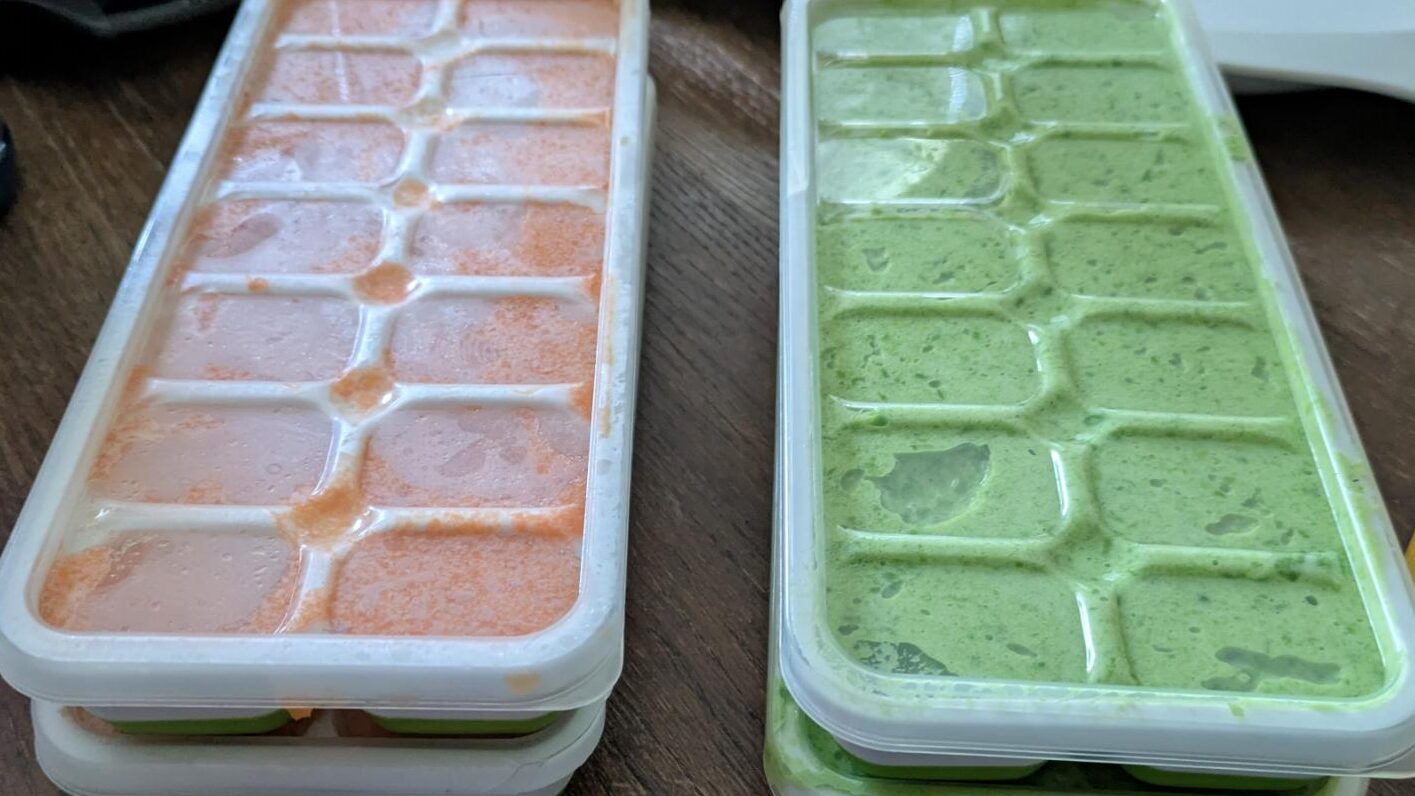Back in the 90s, when I was still wearing the onesies instead of buying them, my mom had to make ends meet however she could. Money was tight, and high quality baby food was hard to find, much less afford. So she got creative. She’d buy high quality vegetables, meats, and later on, made home cooked meals, and run them through the food processor until they were smooth enough for me to eat.
She burned through three processors over the course of my childhood. Such was her dedication to giving me the very best she could. Funny thing is, raw ingredients and three separate machines came out cheaper over the long term than just buying the food that was on the shelves.
Nutrition for the Next Generation
Now here we are in 2025, and I find myself standing in my kitchen with my wife, doing the exact same thing for our daughter. And the math still works, even with inflation the way it is.
Our first attempt at homemade baby food was… less than ideal. We tossed some raw carrots and chicken bone broth into the processor, feeling like pioneers of parental nutrition. The result? Not so great. The uncooked carrots turned the whole thing into a gritty mess, more like wet sand than baby food. Definitely not the silky puree we had in mind.

That little misstep taught us the first big lesson: cook the veggies first. Baby food isn’t just “pre-chewing” the food for the baby, but rather preparing it in a way that the little one can take full advantage of its nutrition. First, steam or boil the vegetables until they’re tender. Once they’re cooked, you toss them in the food processor and watch them transform into that smooth, creamy consistency you’re aiming for. Add in some broth, breast milk, or formula to thin it out if needed, and now you’ve got something your baby can actually eat.

How it’s Really Done
The process is simple but powerful:
- Pick good, whole ingredients. (Farmer’s market if possible, but frozen/canned is better than nothing.)
- Cook them until soft. (Some fruits don’t need this step. Do some research first.)
- Blend until smooth, thinning with liquid as needed. (Broth is a great way to add flavor and nutrients to veggies.)
- Portion and store (ice cube trays work great for freezing single servings! Our trays come out to ~2oz per cube.).
If you chose to freeze the purée, make sure to bring it up to a comfortable temperature before serving. Use a glass jar (yes we do buy some food from the store) and heat the food up by simmering in a shallow bath of water on the stove. Not too hot, you don’t want to burn the baby’s mouth!
Homemade baby food isn’t rocket science, but it does take some trial and error, and a willingness to laugh when your first attempt looks more like tile grout than a grand feast.

Worth the Effort
At the end of the day, making baby food at home doesn’t have to be a chore or an expense that drains your wallet. In fact, it’s the opposite! It’s a chance to explore, experiment, and give your little one the best you can with what you’ve got. It’s one of those small dad wins that feels good, knowing you’re feeding your kid real food without getting robbed at the grocery store.
This is a fun season. Messy, sure. A little chaotic, definitely. But it’s also one more way to show love and care, passed down from my mother and her mother before her. And that kind of legacy feels pretty good.
If you’d like a T-Shirt that captures the exhaustion and perseverance of feeding tiny humans click here. This one was inspired by the brave little processors that gave their lives so I may eat.
Also, if you haven’t already, sign up for the news letter so you don’t miss any of my future posts.
Thanks for reading!
If you liked this post be sure to sign up for my newsletter so you never miss an upload.



Comments are closed